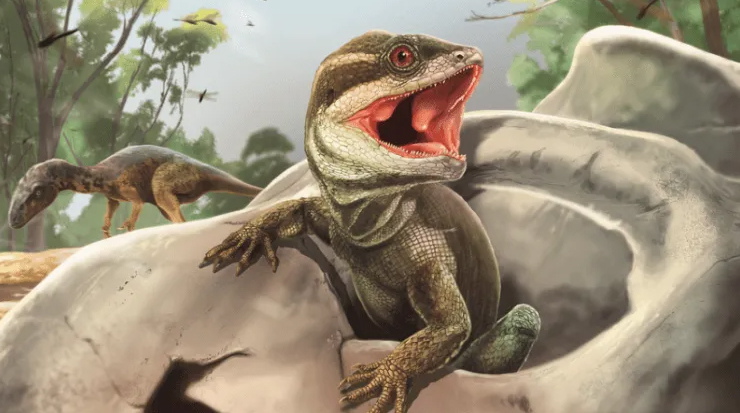In the last hours, San Juan presented to the world a new paleontological finding of enormous importance for science. This is Taytalura Alcoberi, whose skull was found in 2001 in Ischigualasto and studied in depth for 20 years.
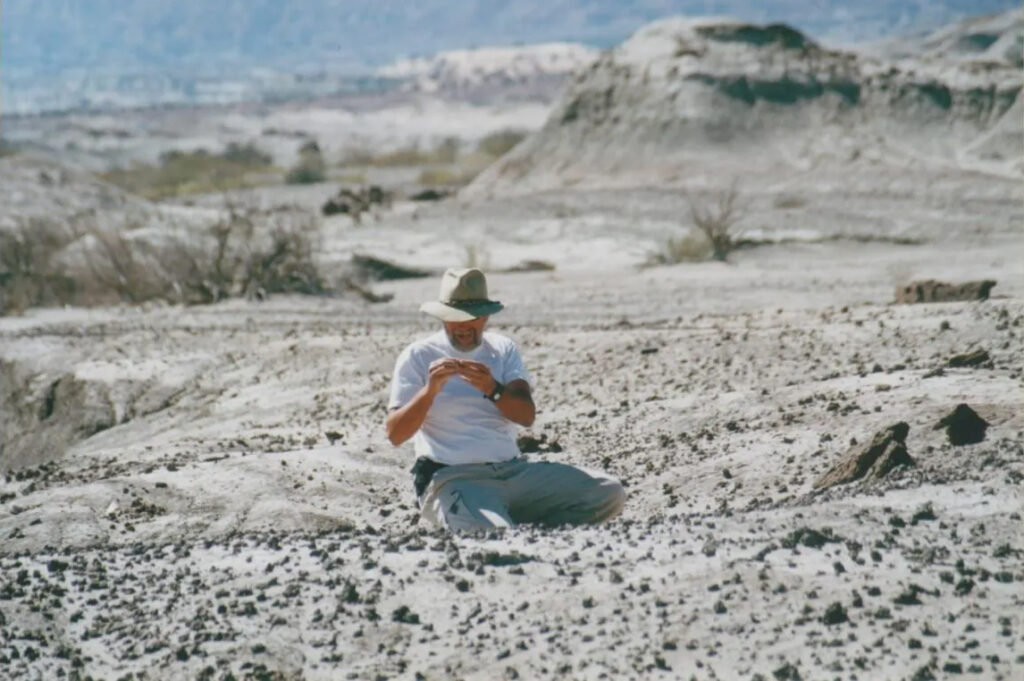
Specialists from the UNSJ Museum of Natural Sciences, led by Ricardo Martínez, discovered that the specimen is the first ancestor of lizards found in southern Pangea, showing that the evolution of the group did not only occur in the north.
Taytulura’s discovery is so important that the research work was published today in the prestigious scientific journal Nature. The title of the work in English is “A Triassic stem lepidosaur illuminates the origin of lizard-like reptiles”, that is: “A lepidosaurus from the Triassic illuminates the origin of lizard-shaped reptiles.”
In turn, it was expected that today at 1:00 p.m. an official presentation will be held at the National University of San Juan, since the study was in charge of the Museum of Natural Sciences of that high house of studies, the Museum of Comparative Zoology of Harvard (USA), the Department of Palaeontology in Stuttgart (Germany) and the Azara Foundation (CEBBAD, CONICET – Maimonides University).
The story of the discovery
Two decades ago, in 2001, Ricardo Martínez led a team in search of fossil remains of different reptiles and ancestors of mammals that coexisted with the first dinosaurs, in the Ischigualasto Provincial Park. There he discovered a tiny skull with its jaw only 2 cm. Martínez stated that the Taytalura skull is exceptional because it is complete and three-dimensionally preserved, something unusual in such small and fragile fossils.
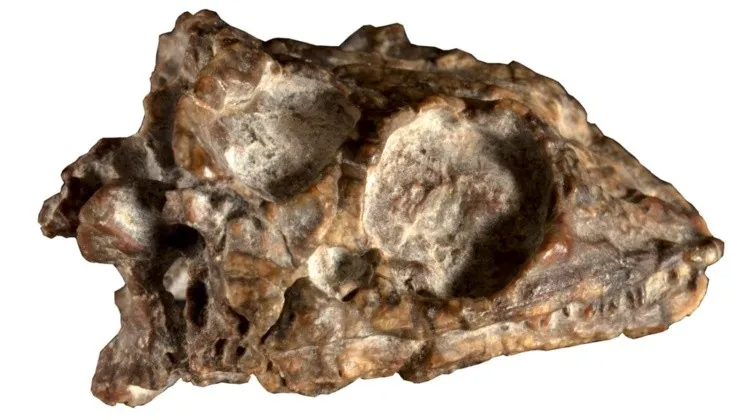
The fossil was found in the “Cancha de Bochas”, a sector where rocks from the Ischigualasto Formation outcrop within the Ischigualasto Provincial Park. The Herrerasaurus, Eoraptor and Panphagia dinosaurs have also been found in this area, as well as ancestors of mammals, such as Ecteninion and Diegocanis. The age has been determined to be about 230 million years old, at the beginning of the Upper Triassic, a time when the greatest predators were terrestrial relatives of crocodiles and the first dinosaurs were gaining ground.
In those times all the continents were forming a single mass, which we know as Pangea, where there were extensive deserts. However, the Ischigualasto area was then very different from the current desert, with abundant ferns, conifers and glossoptérida plants (or “ferns with seeds”), in a world that did not yet know flowers. Small animals like Taytalura moved swiftly hunting insects.
Her caracteristics
The found animal must have measured a total of about 15 centimeters long, not unlike any living lizard, even if only its head has been found.
It has large orbits, a skull extended backwards like that of a chameleon, and its skull bones are adorned with many small hollows. Their teeth are not in holes like ours, nor in a step like in many lizards, nor glued like in sphenodons, but stuck in a long canal, a unique way never seen in other reptiles.
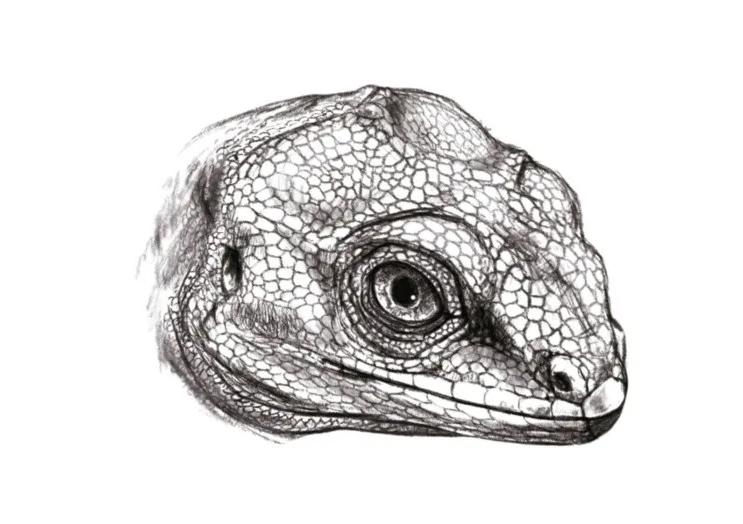
Its anatomical characteristics show that this small reptile is an early representative of the lepidosauromorphs, a group that includes the current lepidosaurs (lizards, snakes and sphenodonts), which today is around 10,000 species and that had its origin at the same time as the dinosaurs. crocodiles, pterosaurs and mammals.
At the beginning of the Mesozoic Era (about 250 million years ago) the lepidosauromorphs differed from the other large group of diapsid reptiles, the archosauromorphs, a group that includes crocodiles and birds.
Other early lepidosaurs have been found in rocks of similar age in Europe, but Taytalura not only appears to be ancestral to all of them in appearance, but is the first to be found in southern Pangea, showing that the evolution of the group not only occurred in the North.
From this derives its name Taytalura alcoberi, from the Quechua word tayta, which means “father or grandfather” and lura from Kakan (a language spoken by the Diaguitas, ancient inhabitants of the San Juan area) which means “lizard”. In turn, the specific name honors the San Juan paleontologist Oscar Alcober, who, together with the first author, led the expedition in which the specimen was found and for his sustained contribution to the development of Triassic paleontology in Argentina.
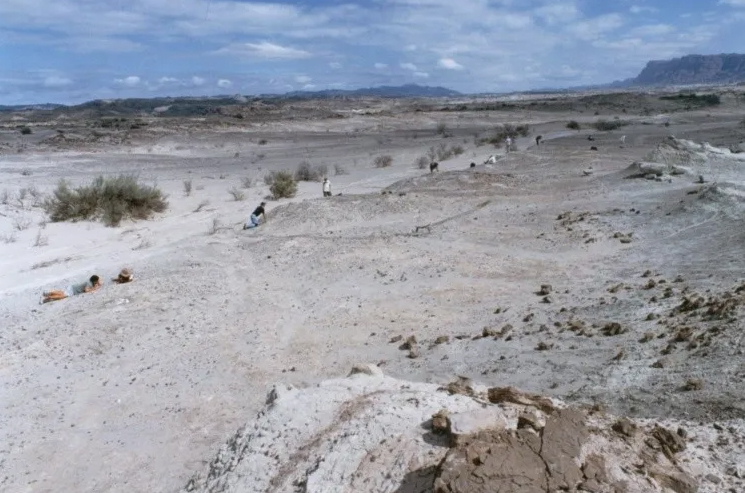
Taytalura’s finding and research gains international relevance not only because of the spectacular nature of the small skull, but also because of the extensive study carried out on the specimen, involving several years dedicated to its preparation, the study that the team leader has carried out on the fossiliferous locality to over decades, the work of tomographic scanning and interpretation of the bones, and the study of the morphology and kinship relationships of the small reptile.
Taytalura Alcoberi sheds light on the origin of the vast group of about 10,000 species that includes lizards, lizards, snakes, amphisbens and sphenodonts, distributed throughout the world and present since the time of the dinosaurs. Taytalura is the first fossil that evolutionarily represents the world’s first Lepidosauromorph and reveals unprecedented details about the origin of the Lepidosaurian skull of the first diapsids. This suggests that several traits that characterize the more derived lepidosaurs evolved much earlier than previously thought. In addition, Taytalura not only shows an ancestral position with respect to other similar forms found so far, but it is the first from the Southern Hemisphere, at that time the southern region of the supercontinent Pangea, teaching us that an important part of that history also occurred in these lands.
Fuente: Diario de Cuyo


